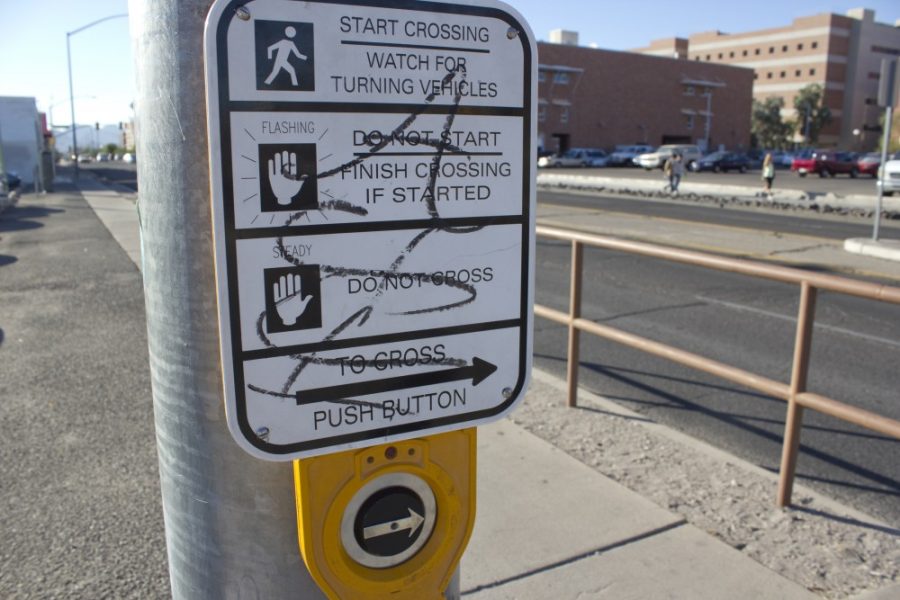Graffiti runs up thousands of dollars in the UA’s checkbook each month, and the crime of opportunity often seen as harmless expression has costly consequences at the UA.
“Graffiti is somewhat different to control because access to buildings is always there,” said Juan Alvarez, a public information officer for UAPD. “It’s hard to stop this problem unless you have someone on patrol at every building at every moment.”
The school receives between 6,000 and 10,000 cleanup requests each month regarding graffiti, said Chris Kopach, the vice president of Facilities Management. While Kopach said he believes the consummate approach in cleaning the “senseless spray painting” is removing displays within 24 hours, these “time consuming” demands still cost the university more than $50,000 a year. Those efforts and expenses take away from other areas, and could be better spent beautifying the campus, he added.
Although graffiti can be anything from a pencil drawing to stickers on a stop sign, both Alvarez and Kopach speculate that the urge to graffiti often comes from a combination of access and opportunity, while others say it’s more emotional.
“The poems on the walls are what’s going on in their lives,” said Becky Quintero, recycling education coordinator of Tucson Clean & Beautiful. “You see the pain, you see the anger, you see the drug use, you see the gangs and then you see the taggers who’re just high on the adrenaline.”
Quintero believes the foremost approach toward preventing graffiti is “immersing kids in their community,” so they feel more pride and ownership of their neighborhood.
The city of Tucson spends $1.2 million annually cleaning up graffiti, Tucson Police Department Sgt. Chris Widmer said. To combat these costs, TPD implemented a TAG, or Targeting All Graffiti, unit in 2010, to focus on the problem. If taggers are caught and TPD is able to link them to pieces that amount to over $2,000 in damages, offenders will face felony charges and possible jail time, Widmer said.
Nationally, effects are showing up in wallets more than on walls, with annual expenses of graffiti estimated at $25 billion in 2008, according to NoGraf Network, for reasons beyond merely clean-up. Due to “broken-window syndrome,” neighborhoods that are heavily tagged are perceived as unruly, sending a message that people don’t care about the area, hurting real estate and local businesses, said Julius Zsako, author of “Defacing America.”
“Instead of spending billions and untold millions to go out and catch these kids, why don’t we go out and spend a couple of bucks on preventative grounds?” he said. “You also find graffiti is addictive. A lot of people do it for the rush and the thrill … People are doing graffiti at 45 years of age.”
Zsako said he believes practices similar to the ones used for promoting recycling and green initiatives should be implemented at schools regarding graffiti to “foster an aura of respect” in neighborhoods. By informing kids of the harm graffiti causes before being presented with the opportunity to partake in it, Zsako said it’ll curb the belief that graffiti is harmless.
“Some tell me this is the greatest form of art since the renaissance,” Zsako said. “If Michelangelo returned from the grave tomorrow and went to your garage to tag it at 2 a.m., that’s still vandalism … that’s still a crime.”









